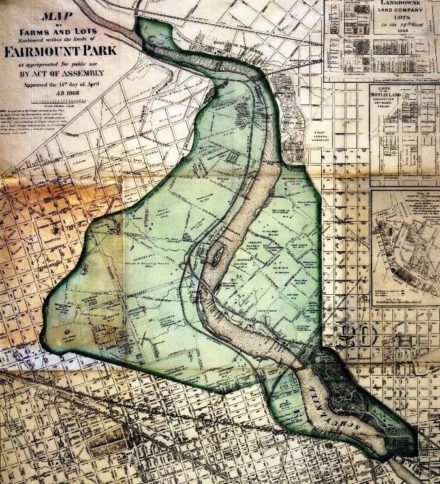
Fairmount Park
Ever since the city of Philadelphia began pumping water from the Schuylkill River for human consumption in 1801, people wanted to protect the source from polluting industries and individuals. The yellow fever epidemics of the 1790s, sparked by unhygienic conditions in the city, added to those concerns. One way they sought to protect human health was through the creation of a park system: the Fairmount Park system to be exact.
The park grew from the Lemon Hill estate of Henry Pratt, which was originally owned by a signer of the Declaration of Independence, Robert Morris. The city purchased the property in 1844 and later added to it through several legislative acts. In 1858, the city held a landscape design competition to create public space that would “protect and improve the purity of the Schuylkill water supply.” The park was added to the National Register of Historic Places on February 7, 1972.
The Fairmount Park system was originally managed by the Fairmount Parks Commission. In 2010, management passed to Philadelphia Parks & Recreation. The park system includes two original park sections names East Park and West Park, which straddle the two banks of the Schuylkill River. The Philadelphia Zoo can be found within West Park. It also includes the following:
- Wissahickon Valley Park
- Pennypark Park
- Cobbs Creek Park
- Franklin Delano Roosevelt Park
- The Schuylkill River Trail
- Fairmount Water Works and Boathouse Row
- And 58 smaller parks throughout the city
When all these parks and features are added together, Fairmount Park becomes the largest landscaped urban park in the world at roughly 2,800 acres. You can plan your visit to the park and find out about special events here.
